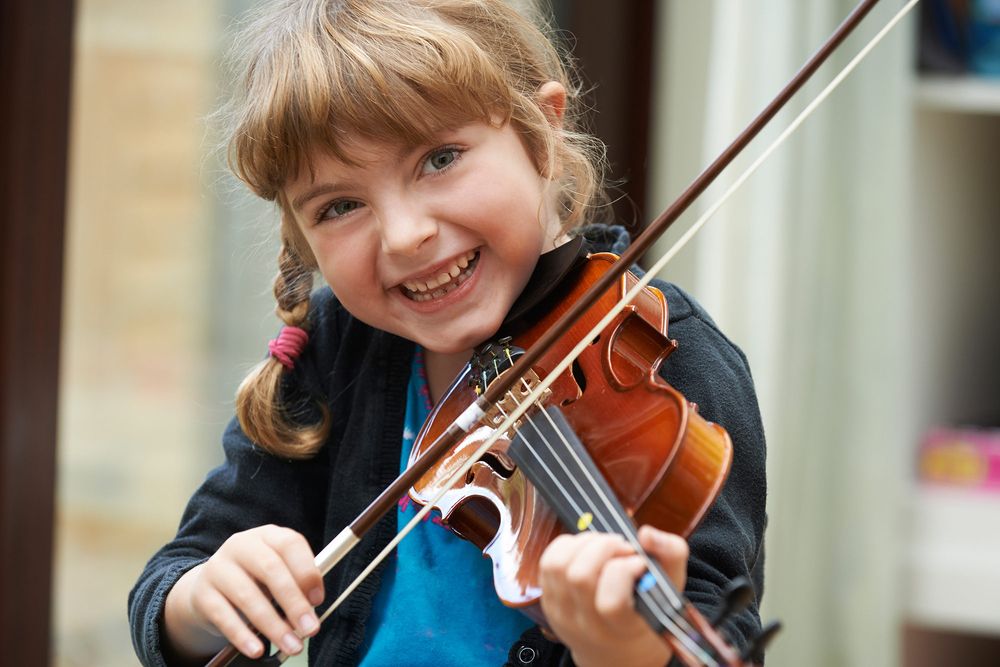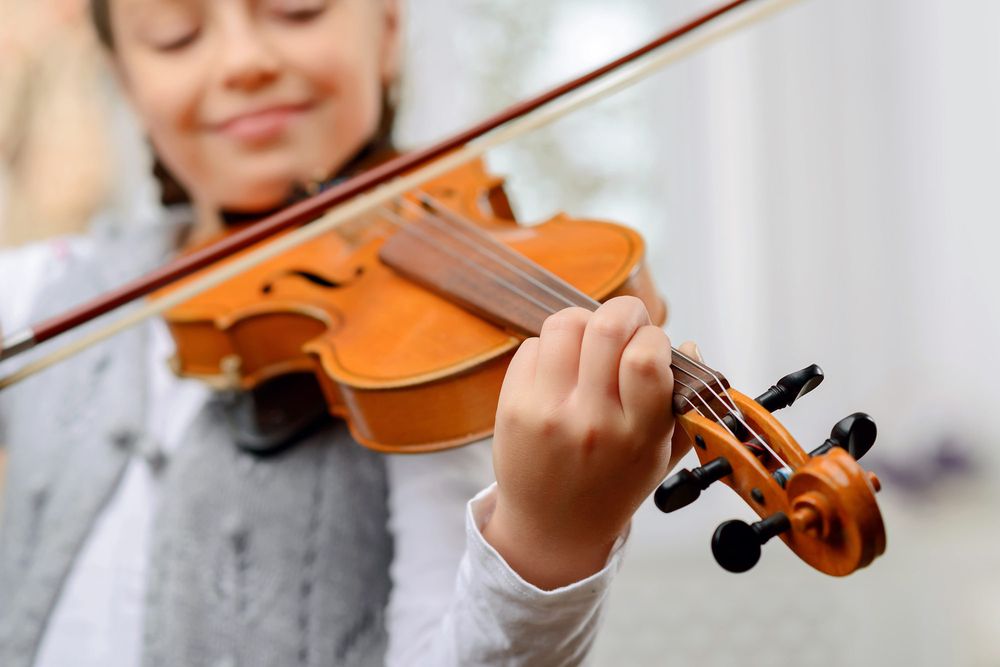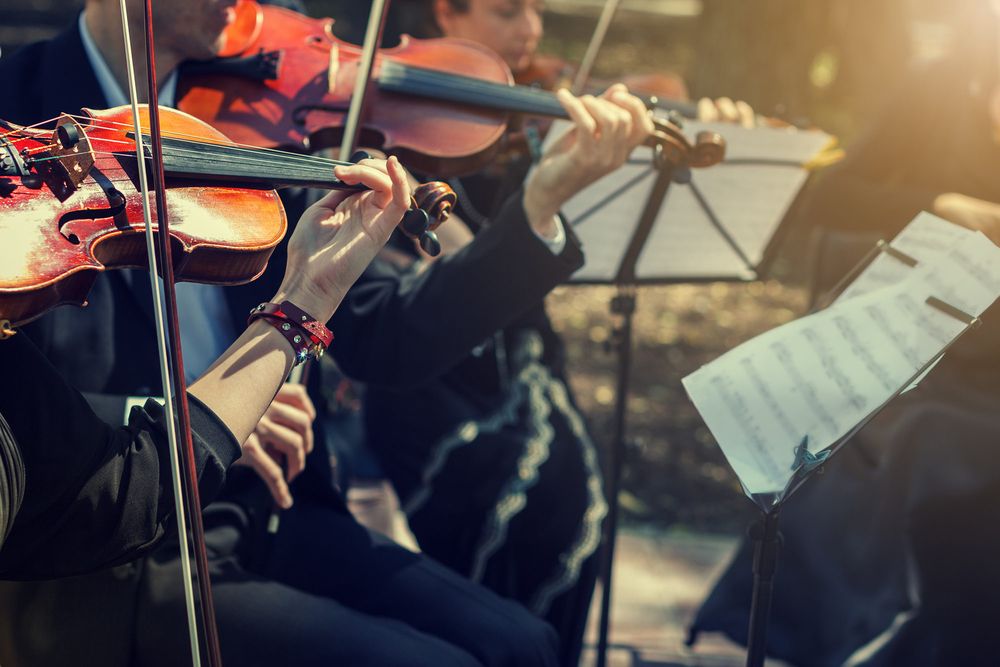5. Beginner Violins
The violin is both a solo and ensemble instrument, and makes an ideal choice for a child who wants to join their school orchestra and play with other musicians. Practising and performing in groups helps to learn an instrument more quickly, as more advanced students will help move you along. Although there are notable players in jazz and folk music, most music written for the violin is from the classical repertoire, and this should be taken into account when encouraging a child to take up their first instrument, as they will generally practise harder when they enjoy the music they're playing! It is considered to be one of the hardest instruments to master because of the tuning and intonation skills required, and when players first start this can be discouraging, as well as uncomfortable for others to hear - patience is key!
Violins are available in smaller sizes for younger pupils:
| Violin size | Overall length | Age group |
| 1/16 violin | approx. 380 mm | 3-5 years |
| 1/8 violin | approx. 425 mm | 4-6 years |
| 1/4 violin | approx. 460 mm | 5-7 years |
| 1/2 violin | approx. 520 mm | 6-8 years |
| 3/4 violin | approx. 560 mm | 7-10 years |
| 4/4 violin | approx. 590 mm | 9 years onwards |
The size of the violin is very important - a violin that is too large can be uncomfortable to hold, and in the worst situations can cause muscular problems. The standard violin size is 4/4 (also called 1/1), and goes down to 1/16.




